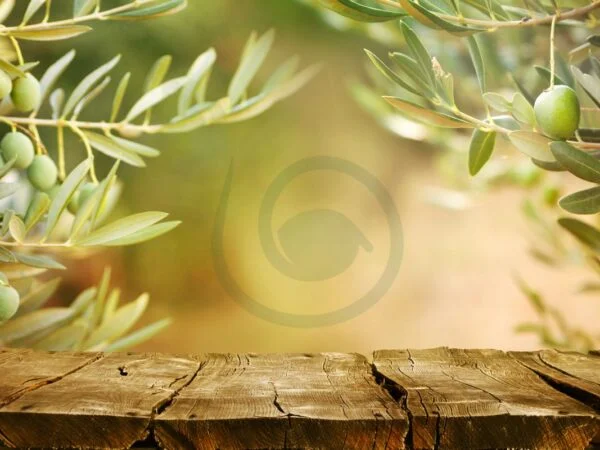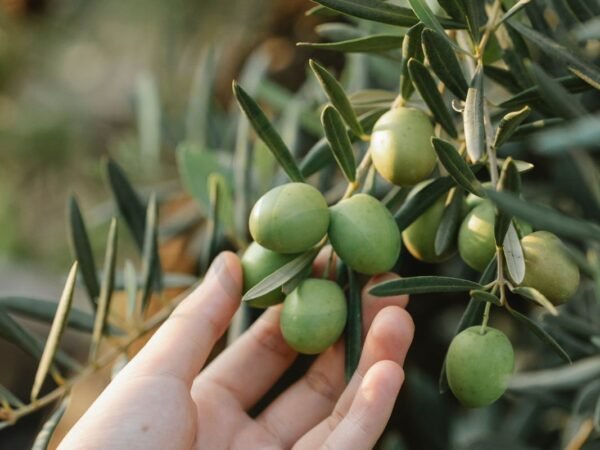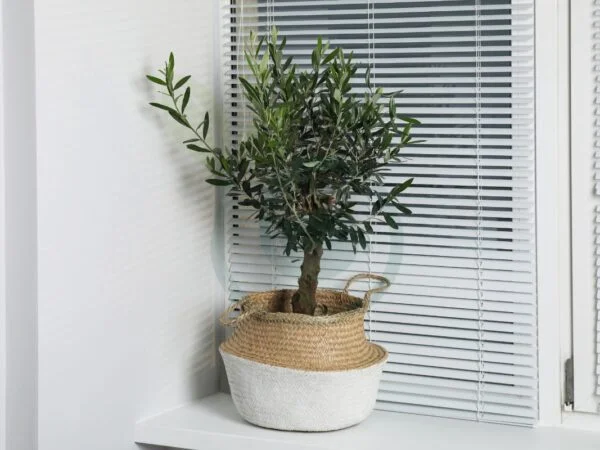Ever wondered how to prune olive trees in the UK for optimal growth and fruiting production? Dive into this guide for expert tips and techniques. Discover the secrets to maintaining healthy olive trees that thrive in the British climate. Learn when, why, and how to prune your olive trees to ensure a bountiful harvest year after year. Uncover the best practices that will help you master the art of pruning with confidence.
Key Takeaways
- Prune Regularly: Regular pruning helps maintain the health and shape of olive trees.
- Timing is Key: Prune olive trees during the dormant season to promote new growth without stressing the tree.
- Use Correct Techniques: Employ proper pruning techniques like thinning, heading, and rejuvenation pruning for optimal results.
- Monitor Health: Pruning can improve the overall health of olive trees by increasing air circulation and sunlight exposure.
- Size Control: Pruning helps control the size of olive trees, making them more manageable and productive.
- Enhance Harvest: Proper pruning leads to better fruit production and facilitates easier harvesting.
- Consistent Care: Regular care and maintenance post-pruning are essential for the long-term health and productivity of olive trees.
Understanding Pruning
Pruning Needs
Pruning olive trees in the UK is crucial for their health and productivity. Regular pruning helps by removing dead or diseased branches, enhancing the tree's appearance. pruning aids in air circulation and sunlight penetration, decreasing the chances of fungal diseases.
Proper pruning techniques promote new growth in olive trees. By eliminating crowded branches, there is more room for healthy shoots to thrive. This process encourages the tree to focus its energy on fresh growth rather than excessive foliage.
Growth Promotion
Pruning plays a vital role in maximizing yield from olive trees. Strategic pruning ensures a balance between vegetative growth and fruiting. By trimming excess branches, resources are redirected towards producing high-quality olives.
Proper Timing
Seasonal Guide
Pruning olive trees in the UK involves different approaches based on the season. Winter is perfect for major pruning since the tree is dormant and less stressed, promoting healthy growth. Light pruning during summer helps manage growth and stimulates fruit production. These seasonal adjustments ensure optimal tree health and productivity year-round.
Month-by-Month Care
In January, focus on removing dead wood to enhance tree structure. February calls for continued structural pruning by eliminating weak or crossing branches that may hinder growth. As March rolls around, thin out crowded areas within the tree to improve air circulation and sunlight exposure. Following these monthly guidelines ensures consistent care for your olive trees throughout the year.
Techniques for Pruning
Best Practices
Regular maintenance pruning is essential to keep olive trees healthy and well-shaped throughout the year. By removing any suckers or water sprouts that may grow at the tree's base, you prevent them from diverting energy from the main tree. Trim long, leggy branches to maintain a compact size, making it easier to manage and harvest olives.
Pruning plays a crucial role in size restriction for olive trees, particularly when space is limited. Selectively removing branches helps control the tree's growth, preventing it from becoming too large or unwieldy. Consistent maintenance pruning ensures that the tree remains at an ideal height for easy care and harvesting.
Shaping Trees
For potted olive trees, regular pruning is vital to preserve their size and shape within containers effectively. Trimming back branches regularly prevents overcrowding in pots, allowing sufficient airflow and sunlight for optimal growth. Pruning promotes robust root development in potted olive trees by maintaining a balanced canopy above ground.
In some cases, olive trees may require drastic action like cutting back hard to rejuvenate their growth potential fully. This technique involves significant branch removal during winter dormancy when the tree can recover without added stress. Cutting back hard allows new shoots to emerge vigorously in springtime, revitalizing the overall health of the olive tree.
Health and Growth
Promoting Healthy Growth
Pruning olive trees in the UK is essential for health and encouraging new growth. By cutting weak or diseased branches, you help the tree thrive. Removing these branches allows sunlight to reach inner parts of the tree, triggering more growth. Regular pruning also prompts strong lateral shoots to develop.
When you prune an olive tree correctly, you're not just promoting its health but also optimizing its overall growth potential. It's like giving the tree a fresh start by removing any damaged areas and letting it focus on growing stronger in other directions.
Optimizing Production
Properly pruning your olive trees can significantly impact their fruit production capacity. Thinning out excessive branches ensures that each remaining branch receives adequate light exposure and proper air circulation, which are crucial for fruit development. By focusing on removing water sprouts, you redirect the tree's energy towards producing fruits instead of wasting it on unnecessary growth.
Maintaining Pruned Trees
Post-Pruning Care
After pruning olive trees in the UK, it's crucial to provide proper care for them. Apply a balanced fertilizer to support new growth and overall tree health. Regularly check for pests or diseases that could harm the pruned areas, ensuring the tree remains healthy.
Post-pruning care is vital as it helps the olive tree recover from the pruning process and promotes vigorous growth. By providing adequate nutrients through fertilization, you support the development of new branches and leaves, enhancing the tree's appearance and productivity. Monitoring for pests or diseases prevents potential damage to newly pruned sections, safeguarding the overall well-being of your olive tree.
Watering and Feeding
Watering and feeding are essential tasks after pruning an olive tree in the UK. Ensure that you water your tree sufficiently to help it recuperate from any stress caused by pruning activities. Applying organic mulch around the base of the tree aids in retaining soil moisture levels while supplying essential nutrients to nourish your olive tree.
Proper watering post-pruning is critical as it helps reduce stress on your olive tree by maintaining optimal hydration levels during its recovery phase. The application of organic mulch around the base serves multiple purposes: conserving moisture in soil, preventing weed growth, regulating soil temperature fluctuations, and enriching soil fertility with time-released nutrients.
Restricting Size
Pruning olive trees in the UK is essential to maintain their size and shape. Preserving form is crucial as it helps the tree grow healthily and produce quality fruit. By regularly pruning, you can ensure that the tree maintains its desired structure.
Removing branches that deviate from the desired form is key to preserving the overall shape of olive trees. This process not only enhances the tree's appearance but also promotes better air circulation and sunlight exposure, leading to improved fruit production. Maintaining an open center or vase shape allows sunlight to reach all parts of the tree, aiding in photosynthesis and ensuring even growth throughout.
Harvesting Olives
Key Considerations
Pruning olive trees in the UK requires careful consideration of several factors. Consider the age and size of your olive tree before pruning to ensure optimal growth and fruit production. Older trees may need more significant pruning to rejuvenate them, while younger trees require lighter trimming to shape their growth.
When planning the timing of your olive tree pruning, it's crucial to take into account local climate conditions and frost risks. Pruning during late winter or early spring is generally recommended when the tree is dormant, reducing stress on the plant. Avoid pruning during periods of extreme cold as this can harm the tree.
To ensure successful pruning, always use clean, sharp tools for making precise cuts. Dull tools can cause unnecessary damage to the branches, leading to infections or slow healing wounds. By using sharp tools, you minimize tearing and promote faster healing for a healthier olive tree overall.
Caring for Olive Trees
Planting and Care
Proper planting techniques are crucial for the health of olive trees. Ensure well-draining soil to prevent waterlogging, which can harm the roots. Choose a sunny spot as olive trees thrive in full sunlight. Monitoring irrigation needs is vital; adjust watering based on weather conditions and tree growth.
The Royal Horticultural Society (RHS) offers detailed growing guides specifically tailored for olive trees. These resources provide essential information on pruning methods, care practices, and general maintenance tips. Following the RHS recommendations guarantees that you are employing best practices when cultivating olive trees in your garden.
RHS Growing Guides
Utilizing the expertise shared by the RHS is invaluable. Their guides outline step-by-step instructions on how to properly prune olive trees UK residents grow in their gardens successfully. By following these guidelines, you ensure that your olive tree receives optimal care and attention.
Special Considerations
UK Climate Adaptations
Olive trees in the UK need special care due to the cooler climate. Opt for cold-hardy olive tree varieties that can thrive in these conditions. Planting olive trees against a south-facing wall can offer them additional warmth and protection from harsh weather.
When cultivating olive trees in the UK, it's crucial to select varieties that are well-suited for colder temperatures. For instance, Arbequina and Arbosana are two types of olives known for their ability to withstand chillier climates. By choosing appropriate varieties, you set your olive trees up for success in the British weather.
Consider planting your olive trees strategically against a south-facing wall. This positioning helps them benefit from extra warmth and sunlight, creating a microclimate that mimics their native Mediterranean environment. The wall acts as a shield against cold winds and provides a conducive setting for optimal growth.
Strategies for Potted Trees
Maintaining potted olive trees requires different pruning strategies compared to those planted directly into the ground. Regular root pruning is essential to keep the root system healthy within limited container space. By periodically trimming roots, you encourage new growth and prevent overcrowding in the pot.
For potted olive trees, focus on achieving a balanced canopy by selectively removing branches when necessary. This approach ensures proper air circulation within the tree's foliage while promoting healthy growth patterns overall.
You've now learned the ins and outs of pruning olive trees in the UK. Understanding the basics, knowing when to prune, mastering the techniques, and ensuring the health and growth of your trees are crucial steps. Remember to maintain your pruned trees, restrict their size, harvest olives effectively, and provide special care as needed.
Now it's time to roll up your sleeves and put your newfound knowledge into action. Grab those pruning shears, head out to your olive grove, and give those trees the TLC they deserve. By following these guidelines, you'll not only enhance the health and yield of your olive trees but also enjoy a bountiful harvest for years to come. Happy pruning!
Frequently Asked Questions
How does proper timing impact olive tree pruning?
Proper timing is crucial for olive tree pruning as it ensures minimal stress on the tree and maximizes its growth potential. Prune during late winter or early spring to avoid interfering with fruit production and promote healthy regrowth.
What are some techniques for pruning olive trees in the UK?
Key techniques for pruning olive trees include removing dead/diseased branches, shaping the canopy, and thinning out crowded areas. Always use sharp tools to make clean cuts without causing unnecessary damage to the tree.
Why is maintaining pruned trees important for their health?
Regular maintenance post-pruning helps monitor the tree's growth, prevent diseases, and ensure proper structure development. It also promotes air circulation within the canopy, allowing sunlight penetration essential for photosynthesis.
How can one restrict the size of an olive tree through pruning?
To control an olive tree's size effectively, focus on selective branch removal rather than heavy trimming. Regularly prune back new growth shoots to maintain a desired height while encouraging lateral branching that contributes to a balanced canopy structure.
When should olives be harvested after pruning?
After completing your annual prune, wait until autumn when olives have developed fully but are still firm before harvesting. This timing allows you to enjoy optimal fruit quality while ensuring a bountiful harvest from your well-maintained trees.
Image Source: Paid image from CANVA




